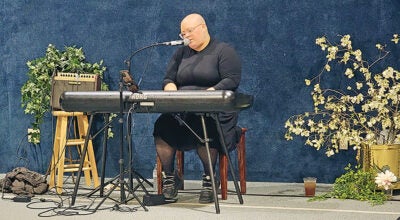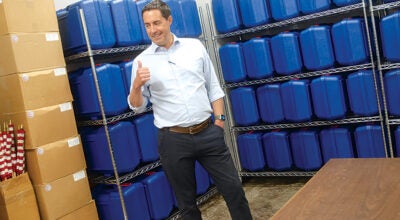Glory days return
Published 12:00 am Sunday, June 13, 2010
SOUTH POINT — The 21-foot wide paddlewheel is motionless, its paint chipped and wooden ribs chewed apart. Plates on the once watertight hull mist out a powder of fine dirty orange rust each time a welder touches them with a lighted torch. Yet slowly there is life coming back to the W. P Snyder Jr. sternwheeler towboat.
In a few more months the W.P. will be back in more familiar waters tied up outside the Ohio River Museum at Marietta, where she has been docked since 1955.
But right now she is resting in the “shipyard spa” at McGinnis Inc., where crews have already put in more than 5,000 man-hours ripping off the old and welding on the new.
Keeping watch over the W.P. through this intensive transformation has been Jack Deck, a naval architect, who made the trip down the Ohio River earlier in the year, when the vintage boat came down for her facelift.
“It was taking on water and something had to be done,” Deck said. “They couldn’t keep pumping it out.”
Sandwiched between two barges with a towboat behind each barge, she was brought down in a 36-hour trip from Marietta to McGinnis.
“It look longer because we ran into fog,” Deck said.
It was Feb. 21, 1918, when the W.P. Snyder first went into the water. Then she was called W.H. Clingerman, named for the general superintendent of the H.C. Frick Co.
Her job was to tow coal barges coming from the mines along the Monongahela River, upriver from Pittsburgh, down to the Carnegie steel mills.
She had come out of the shipyards of James Rees and Sons in Pittsburgh where ships were built from 1878 until 1930, when the yard closed down. Among its claims to fame are that it was here that the first steel-hulled boat in America was built as well as the first boat with electric lights.
In 1939, the W.P. got a new hull and a new name as she was christened the J.L. Perry. In 1945, the Crucible Steel Company of America bought her and renamed her the W.P. Snyder Jr., for the Crucible’s CEO.
She had a crew of 10 and could do 17 miles per hour top speed, pretty close to what boats today can do.
However, the W.P. was fueled by a coal-fired boiler that powered two engines and by the early 1950s, diesel was king. That meant the W.P. had exhausted her usefulness and in 1954 came out of the river channel for good.
Now, she is a museum, albeit right now a leaky one. But as new 5/16-inch steel panels are put back on the frame, she is quickly becoming seaworthy again, thanks to work at the new facility McGinnis recently built near Sheridan.
“This is a state of the art yard,” Tom Schollenberger of McGinnis Inc., said. “We probably didn’t have the ability to do this in the old yard.”
Soon the W.P. will come off the blocks at dry dock and be brought back to Marietta for sightseers and history buffs to admire. It’s a fate one of her greatest fans heartily approves of.
“This is that last of its type,” Deck said.





